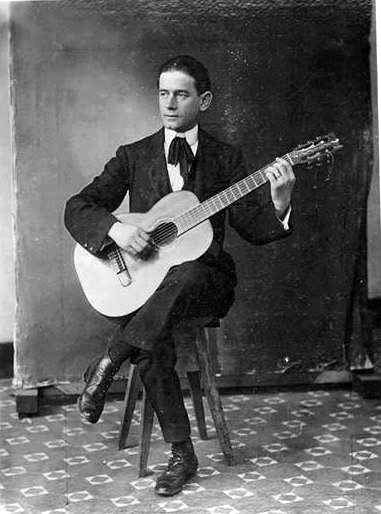José Luis Betinotti was a renowned guitarist, payador, and composer from Buenos Aires. Known as “el cantor de las madres” and later hailed as “el último payador,” Betinotti’s influence extends far beyond his time, leaving an indelible mark on the world of Argentine Tango.
Table of Contents
Biography: A Glimpse into Betinotti’s Life
Born on July 25, 1878, in Buenos Aires, José Luis Betinotti was the son of Italian immigrants, Juan Betinotti and María Costa. Despite working as a tinsmith and a women’s shoe heel molder, Betinotti’s true passion lay in serenading. His journey into the world of payada began in 1898 when he crossed paths with the esteemed payador Gabino Ezeiza.
Notable Works: Pobre Mi Madre Querida and Beyond
Betinotti’s musical legacy is anchored by his masterpiece, “Pobre mi madre querida,” which gained widespread recognition. This iconic song was first recorded by Carlos Gardel, who also featured Betinotti’s compositions like “Como quiere la madre a sus hijos” in 1919 and “Tu diagnóstico” in 1922 on his albums. Betinotti’s verses, often infused with the lunfardo porteño, showcased a departure from traditional gauchesque themes.
Legacy on Screen: “El Último Payador”
In 1950, a film titled “El último payador” was released, chronicling the life of José Luis Betinotti. Co-written by Homero Manzi and directed by Manzi and Ralph Pappier, the film starred Hugo del Carril as the payador and Aída Luz as his wife.
Publications: Sharing Poetry with the Masses
Betinotti’s poetic creations weren’t confined to musical recordings. His verses found a home in low-cost booklets, ensuring accessibility for all. Some of his published works include “Mis primeras hojas,” “Ideal de mi esperanza” (1909), “Lo de ayer y lo de hoy” (1909), and “De mi cosecha” (1912).
Most Important Tango Songs by José Luis Betinotti
- “Como quiere la madre a sus hijos (Desde entonce!)”
- Recording Year: Unspecified
- Orchestra: Unspecified
- Singer: Unspecified
- Details: A captivating Vals that continues to enchant tango dancers with its timeless melody and emotional depth.
- “Pobre mi madre querida (Cuanto siento)”
- Recording Year: Unspecified
- Orchestra: Unspecified
- Singer: Unspecified
- Details: Betinotti’s magnum opus, resonating with dancers due to its poignant lyrics and melodic charm.
- “Tu diagnóstico (Qué me habrán hecho tus ojos)”
- Recording Year: Unspecified
- Orchestra: Unspecified
- Singer: Unspecified
- Details: A composition that stands out for its lyrical beauty, still capturing the hearts of tango enthusiasts today.
- “A mi madre (Con mis amigos)”
- Recording Year: Unspecified
- Orchestra: Unspecified
- Singer: Unspecified
- Details: This piece, expressing gratitude to mothers, remains a cherished part of tango dance events for its emotional resonance.
As you immerse yourself in the world of Argentine Tango, let José Luis Betinotti‘s musical creations be your guide, connecting you to the soulful rhythms that continue to echo through the dance floors of Milonga events worldwide.
FAQ Section: Unraveling the Mysteries of José Luis Betinotti

What is the significance of Betinotti’s “Pobre mi madre querida”?
“Pobre mi madre querida” is Betinotti’s most famous composition, recorded by Carlos Gardel. Its enduring popularity lies in its emotional resonance and unique departure from traditional gauchesque themes.
Why is Betinotti referred to as “el último payador”?
This title, meaning “the last payador,” emphasizes Betinotti’s role as one of the final torchbearers of the payada tradition.






